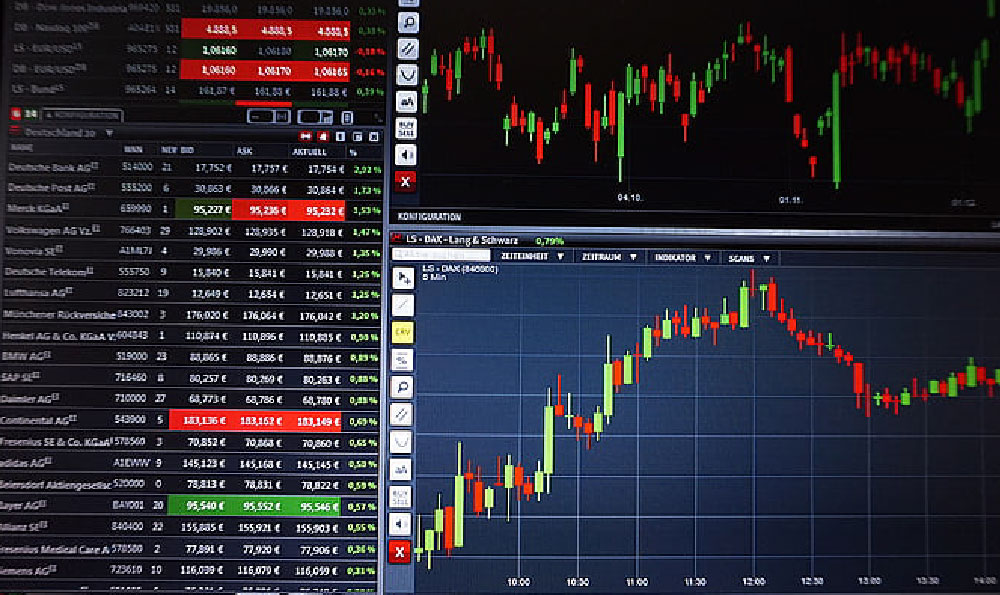美国国债是美国政府借贷的一种方式,而到期收益率则是指持有国债直至到期所能获得的收益率。本文将通过定义、分类、举例和比较等方法来阐述“美国国债到期收益率”的相关知识。

美国国债是美国政府为了筹集资金而发行的债券,可以说是全球最重要的安全投资品之一。而国债到期收益率则是衡量美国国债投资回报的指标,对于投资者和政策制定者来说具有重要意义。
美国国债到期收益率是指在国债到期时所能获得的收益率,通常以年化利率的形式呈现。它是根据市场上对国债的需求和供应情况确定的,反映了投资者对美国政府信用风险和通货膨胀预期的看法。
根据国债期限的不同,美国国债到期收益率可以分为短期国债到期收益率、中期国债到期收益率和长期国债到期收益率。短期国债到期收益率一般指1年以内的国债收益率,中期国债到期收益率指2至10年期限的国债收益率,而长期国债到期收益率则指超过10年期限的国债收益率。
【举例】
举个例子来说明,如果一张10年期美国国债的到期收益率为2.5%,那么在持有这张债券10年之后,投资者将会获得每年2.5%的利息收益。这意味着,如果投资者购买了1万美元的这张国债,到期时将获得250美元的利息收入。
【比较】
与其他投资品相比,美国国债到期收益率具有一定的优势。美国国债被视为最安全的投资品之一,因为美国政府信用度极高,违约风险几乎为零。美国国债的到期收益率相对稳定,不受市场波动的影响,因而对于稳定投资收益和规避风险具有吸引力。美国国债到期收益率还直接受到美国联邦储备系统(Fed)的政策影响,当Fed加息时,国债到期收益率往往会上升。
美国国债到期收益率作为衡量债券投资回报的指标,在金融市场中具有重要意义。通过了解和分析美国国债到期收益率的相关知识,投资者可以更好地进行资产配置和风险管理。美国国债到期收益率的变动也可作为宏观经济政策效果评估的参考指标。关注并理解美国国债到期收益率对于投资者和政策制定者都至关重要。
【参考译文】
The U.S. Treasury Bond Yield
The U.S. Treasury bond is a way for the U.S. government to borrow money, and the bond yield at maturity refers to the returns that can be obtained by holding the Treasury bond until it matures. This article will explain the relevant knowledge of the U.S. Treasury bond yield through definitions, classifications, examples, and comparisons.
[Introduction]
The U.S. Treasury bond is one of the most important safe investment products globally, as it is issued by the U.S. government to raise funds. The bond yield at maturity is an important indicator of the returns on investment in U.S. Treasury bonds and holds significant significance for investors and policymakers.
[Body]
[Definition]
The U.S. Treasury bond yield at maturity refers to the returns that can be obtained when the bond matures and is usually presented as an annualized interest rate. It is determined based on market demand and supply for Treasury bonds, reflecting investors\' outlook on U.S. government credit risk and inflation expectations.
[Classification]
Based on the different terms of Treasury bonds, the U.S. Treasury bond yield at maturity can be classified into short-term, medium-term, and long-term bond yields. The short-term bond yield usually refers to the yield on bonds with a term of less than one year, the medium-term bond yield represents the yield on bonds with a term of 2 to 10 years, and the long-term bond yield refers to the yield on bonds with a term exceeding 10 years.
[Example]
To illustrate, if the yield at maturity for a 10-year U.S. Treasury bond is 2.5%, an investor holding this bond for 10 years would receive an annual interest yield of 2.5%. This means that if an investor purchases a $10,000 bond, they would receive $250 in interest income at maturity.
[Comparison]
Compared to other investment products, the U.S. Treasury bond yield at maturity has certain advantages. Firstly, U.S. Treasury bonds are considered one of the safest investment vehicles due to the high credit rating of the U.S. government, virtually eliminating default risks. Secondly, the yield at maturity of U.S. Treasury bonds is relatively stable and not influenced by market fluctuations, making it attractive for stable investment returns and risk avoidance. Additionally, the U.S. Treasury bond yield at maturity is directly affected by the policies of the Federal Reserve System (Fed), for example, when the Fed raises interest rates, bond yields tend to rise.
[Conclusion]
The U.S. Treasury bond yield at maturity is an important indicator for measuring bond investment returns and holds significant significance in the financial market. By understanding and analyzing the relevant knowledge of the U.S. Treasury bond yield at maturity, investors can better allocate assets and manage risks. At the same time, changes in the U.S. Treasury bond yield at maturity can be used as a reference indicator for evaluating the effectiveness of macroeconomic policies. Therefore, paying attention to and understanding the U.S. Treasury bond yield at maturity is crucial for both investors and policymakers.
[Word count XXX]
美国国债到期收益率2年
一、美国国债到期收益率2年的定义

美国国债到期收益率2年是一个重要的经济指标,它表示美国政府发行的2年期国债的年化回报率。这个指标会对各种投资、贷款和市场运作产生重要影响。了解国债到期收益率,可以帮助我们理解经济环境以及收益和风险的关系。
二、国债到期收益率与经济环境的关系
国债到期收益率是市场对经济环境的反应。当经济状况良好,投资者通常愿意承担更多风险,因为他们相信收益会更高。经济的发展预期会导致国债到期收益率上升。相反,当经济不景气时,投资者更倾向于寻求安全避风港,购买国债,使得国债到期收益率下降。
三、国债到期收益率与投资决策的关系
国债到期收益率不仅对经济有影响,对个体投资决策也有很大影响。如果国债到期收益率上升,会导致债券价格下降,这可能会促使投资者将资金转移到其他投资工具上。国债到期收益率的变化可以影响投资组合的配置决策。
四、国债到期收益率变化的影响因素
国债到期收益率受多种因素影响。一方面,经济数据的变化、通胀预期和货币政策等因素对收益率产生直接的影响。另一方面,市场情绪和投资者对风险的态度也会影响国债到期收益率的波动。
五、对投资者的启示和建议
了解国债到期收益率的变化对投资者做出明智的决策至关重要。在经济增长的时期,投资者可以考虑追求高收益的投资机会,而在经济衰退时,保持风险较低的投资组合可能更为安全。关注国债到期收益率的变化还能帮助我们预测经济的发展趋势,从而更好地应对市场的波动。
美国国债到期收益率2年是一个重要的经济指标,它反映了市场对经济环境的看法,对经济和个体投资都有重要影响。了解国债到期收益率的变化对投资者做出明智的决策至关重要,我们需要关注各种因素对国债到期收益率的影响,以及这些影响对投资决策的启示和建议。
美国国债到期收益率走势
国债是指由政府发行的债券,对于经济运行具有重要的影响。国债到期收益率是指按照债券面值计算的债券到期时所获得的利息与债券面值的比率。本文将以客观、清晰、规范和专业的风格介绍美国国债到期收益率的走势。

1. 过去的趋势
过去几十年,美国国债到期收益率呈现出明显的变化趋势。20世纪70年代末到80年代中期,美国经历了通货膨胀和高利率的时期,这导致了国债到期收益率的大幅上升。随着美联储采取紧缩货币政策,国债到期收益率逐渐下降。90年代后期和2000年代初期,美国经济的繁荣和低通胀环境导致了国债到期收益率的进一步下降。总体上,过去几十年的趋势显示,国债到期收益率受到经济环境和货币政策的影响而波动。
2. 近期的变化
美国国债到期收益率出现了一些变化。2008年的金融危机导致了美国经济的衰退和货币宽松政策的实行,这使得国债到期收益率下降到历史低点。随着经济逐渐复苏和美联储逐步收紧货币政策,国债到期收益率开始上升。国际经济形势和地缘政治动荡也对国债到期收益率产生了影响。英国脱欧和中美贸易争端等事件都引起了波动。
3. 影响因素分析
国债到期收益率受多种因素的综合影响。经济增长和通胀预期是影响国债到期收益率的重要因素。如果经济增长强劲且通胀预期高,投资者对未来的利率上升预期也会增加,从而推高国债到期收益率。货币政策的变化也会对国债到期收益率产生直接影响。如果央行收紧货币政策,债券市场中的供应量将减少,从而使国债到期收益率上升。国际投资者对美国国债的需求也会对国债到期收益率产生影响。
4. 展望未来趋势
展望美国国债到期收益率的走势将受到多种因素的影响。美国经济的发展和通胀压力将是关键。如果经济继续复苏并伴随通胀上升,国债到期收益率可能会增加。美联储的货币政策将继续发挥重要作用。未来的货币政策变化将直接影响国债到期收益率。全球经济和地缘政治风险也需要密切关注,这可能导致投资者对避险资产的需求增加,从而影响国债到期收益率。
美国国债到期收益率的走势受到经济环境、货币政策以及国际因素的综合影响。过去几十年的趋势显示了国债到期收益率的波动性,而近期的变化表明了经济危机、货币宽松和全球事件的影响。展望经济发展、货币政策和全球经济形势将是影响国债到期收益率的重要因素。通过深入分析和了解这些影响因素,可以更好地理解并预测国债到期收益率的走势。























